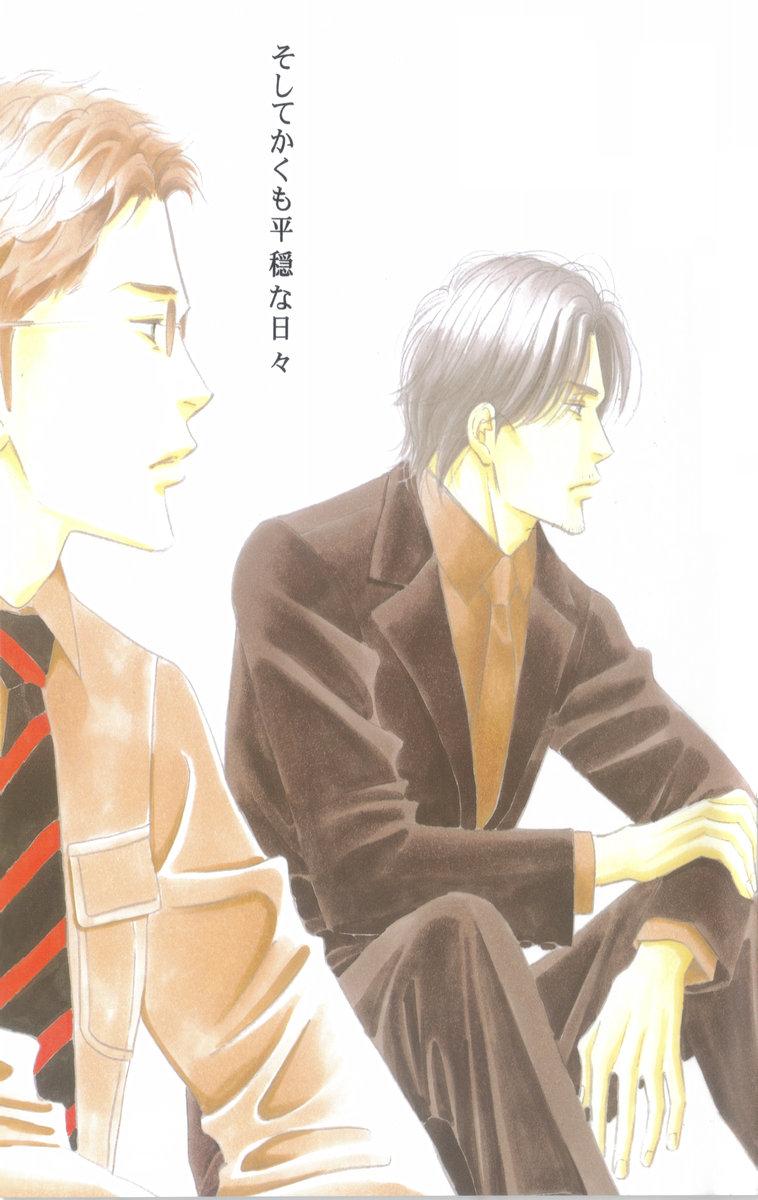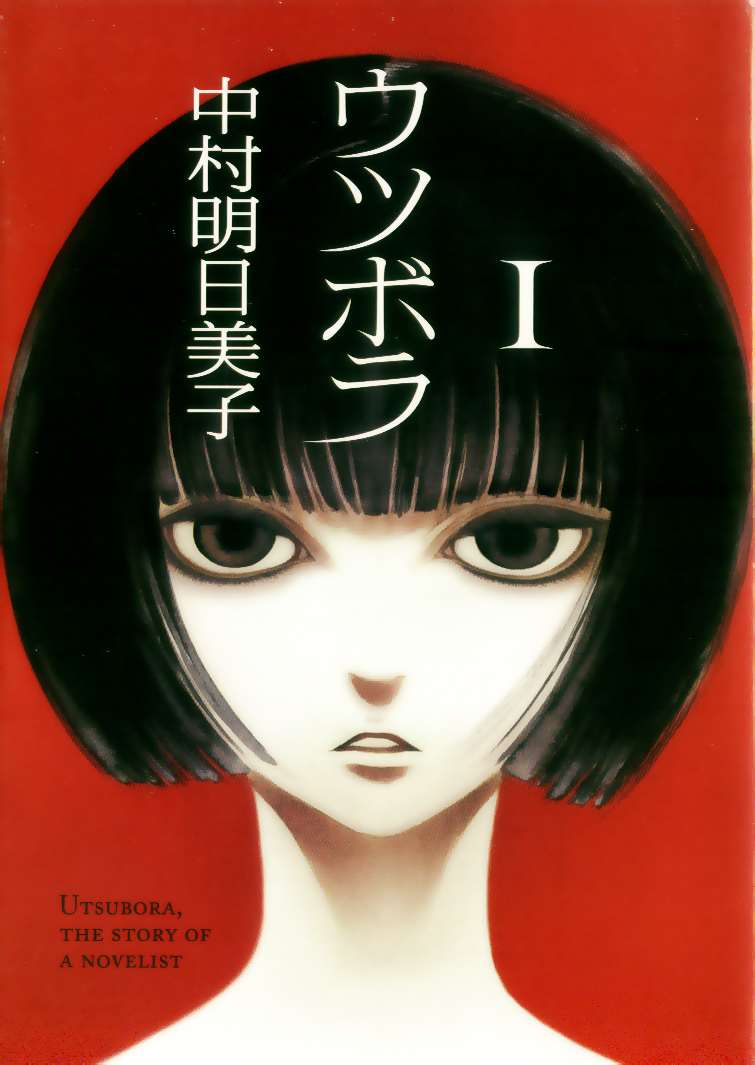With the Toronto Comic Arts Festival coming up, I felt it best to tell the world more about Natsume Ono. She’s been getting much acclaim among manga critics however, the truth of the matter is — the English-speaking world has only grazed half of her works. Natsume Ono still has lots to offer.
There’s more to Natsume Ono than Italian restaurants and kidnappers. In fact, doing this spotlight for Natsume Ono requires a journey for my readers. If you would allow me, I’d like to take you to a journey down to Ono’s lane because knowing her works takes more than just looking at her pictures. You’ve got to immerse yourself and experience her works to understand how Natsume Ono is definitely not simple.
An immersion?
It must be strange to ask readers to take some time and immerse in Natsume Ono’s work. However, I think that skimming through her works doesn’t give her justice.
If we try to read her works quickly, we could get bored by her pace. Ono loves to take her time in her stories. She also loves to use close-ups and ’empty’ stares and her art style as Natsume Ono makes it difficult to connect the face to the emotion, especially with her sketchy cartoon-like faces. We either get lost by going too quickly or we might just miss the point. Hence, if you’re in a rush for some quick entertainment, don’t grab her manga because it won’t give you a quick fix. If you’ve got time to spare, then we can start our immersion and really understand the story she’s telling.
Her earlier works, Not Simple, La Quinta Camera, and Tesoro, are beautiful introductions to who Natsume Ono is and what her works are all about. She was an Italian language student in Italy for ten months hence her stories often involve journeys, discoveries and possibilities. Not only do we discover more about the world, people, and places through her works, but we also learn the difficulties of the past, the complexity of the now and the uncertainty of tomorrow.
Now, isn’t that quite an intimidating read? We’ve seen Osamu Tezuka pull it off but it took him years of work to capture the same thing that Ono’s been doing for only seven years. She only started writing manga in 2003 hence it makes one curious on how she manages pull it off.

The thing with Ono is that she started drawing professionally at such a late age that I could only assume that she has achieved a certain maturity as a person by the time that she was publishing her works. Hence, she has a very different perspective — one that’s complex, refined, and infinite. Her manga, while drawn quite loosely, can be very intense. She’s the kind of mangaka who would dedicate panels to capture ‘a moment’ that has great emotional weight. The danger with this is if you don’t step into her character’s shoes and feel what they feel and think what they think, those moments could either be the most boring panels you have ever read or they could be the most emotionally charged ‘moment’ that you have ever seen.
It is in understanding this intensity that we begin her spotlight. Without immersing through her works, we’ll never capture these ‘moments.’
Choose your own adventure
If I was in TCAF and had a chance to ask a question to Natsume Ono, I’d like to ask her how much her travels changed her life and how it influenced her works.
Travelling is a common theme in her works. In Not Simple we have Ian searching for his sister. In La Quinta Camera, a girl travels to Italy and meets an interesting set of men. Ristorante Paradiso is about a girl in search of her mother only to find herself caught in a small yet beautiful restaurant. Masa of House of Five Leaves is on a journey for a job. Tsuratsurawaraji is about a daimyo going through his sankin koutai.
There’s a sense of journey, more so, a personal and intimate journey that the Japanese call “jibun sagashi no tabi.” This phrase is deep with meaning and you can probably use the term “soul searching” to interpret it. But it’s not quite “soul searching” because in Ono’s world, her characters are not really looking for a grand purpose or their “soul” for that matter. Rather, her characters simply walk their own path and end up learning something along the way. And fate (in this case Ono) throws them various circumstances and it becomes an interesting adventure, one that pushes them to change their beliefs or set their own personal convictions in life. I think she probably knows how much journeys are important to people considering this cover of Morning 2 with Tsuratsurawaraji.

And while seeing personal journeys is nothing new in any story in this world, what makes Ono unique is how she manages to capture the pivotal points in their lives with poignant, intense panels that are open to interpretation. Her art is expressive in a way that it is inexpressive. A girl in La Quinta Camera may be just walking towards door but it could mean her hesitation in taking a step forward but at the same time it could also simply be just her waiting for something to happen, or her thinking of what could happen next.
It is in this manner that reading Ono’s works could be a different experience from time to time. And just like the characters in her stories, you also go on a “jibun sagashi no tabi,” learning something new about people and the world through her world.
No country for old men?
While I’ve shared some poignant reflections about Natsume Ono, my personal reason on why I became her fan is shallower than just curiosity. I got into her because I have a bad moe for old men. I am the fujoshi who dig old classy elegant men and Ristorante Paradiso and Gente tapped my old man fantasies.  I think they can give the staff of Antique a run for their money.
The men of Casette dell’orso are hot. Reading Ristorante and Gente brought me back to those trattorias and osterias in Italy where old men stood by the bar with their ironed white shirts, cleaning glasses and smiling at you in the most seductive fashion as you walk through the door. Their grace is effortless and you’re drawn to their charm without them even trying. Trust me. Those men in Casetta dell’orso exist. There’s a great chance you’ll cross the likes of them in Italy. Resisting them is also futile.

At times I feel like a guest in Casetta dell’orso. I can see myself dining and watching the waiters shuffle around, hoping I could catch a glimpse of their smile or even a gentle nudge of their glasses. What I didn’t know about them only fueled me to dig deeper into their stories. What I found instead was a treasure trove of amazing old men: a country of sexy old men.
The politics of gelaterias, tattoo parlors, and basso’s imagination
Unlike Ono’s cartoonish trademark, her alter-ego fujoshi named basso draws different animal. Like in Gente, basso’s world is tucked in the dark cobbled alleyways of Italy… and some gelaterias.
The world of Kuma to Interi, Amato Amaro, Gad Sfortunato, and Al to Neri to Shuuhen is filled with Italian men, old men, muscular men, elegant men, playful men, tattooed men, men who love gelato, men who love intellectuals, men who love politics, and men who understand the politics of love. Ono’s trademark squiggles are traded in for some thick luscious lines that draw the most rugged chests and the most seductive eyes. Some might see a little bit of est em in Basso’s art however her brand of seduction is different compared to est em’s.
est em likes her men lean and muscly. basso is not bound by that particular aesthetic. She doesn’t mind drawing bears ((not actual bears but men with a larger physique, like she did in Kuma to Interi)) nor is she strict with a particular bishounen aesthetic.  est em is a romantic where basso is not. Not to say that basso can’t make our hearts flutter but she doesn’t restrict herself to romances. It’s as if saying that relationships need not revolve around love or sex. ((There’s hardly any sex in a basso manga)) Passion, seduction, loyalty, generosity, and at times, selfishness and stupidity are at the heart of her BL. Her mature perspective shines through, making her BL deliciously complex.  It’s a very rugged affair: unapologetic, at times mysterious, and quite masculine… in a fujoshi way. It is sexy in its intelligence and just like Neri, one of her characters in Kuma to Interi and Al to Neri, you’ll be drawn to this cleverness.

Unlike Ono, basso is more upfront, direct, and the flows of her stories are clearer and tighter with every chapter. Strangely, there’s no real need for immersion with basso (although some moments of reflections can be helpful in Gad Sfortunato). I find her works more cohesive than her non-BL titles. It’s such a shame that basso’s works have not yet been licensed and I hope that someone in Toronto ask her publishers why basso is not yet making a mark in our BL bookracks. I’ve been pimping Basso long enough to David Welsh and I’m totally with him in requesting for these licenses. I long to squee with him once this license request has been fulfilled.
Perhaps the closest that we could get with this style is with Ristorante Paradiso, Gente, and House of Five Leaves, especially with the way Masa’s drawn. However, as seductive as it looks, the pace of House of Five Leaves just don’t compare with Basso’s pace.
Down the police block
 I’m not exactly sure if people know that she’s also written a series of stories that depict the life of New York’s police department. I’m not exactly sure what triggered her to write this but in her early days, she wrote a doujin called I’ve a rich understanding of my finest defenses. The story centered on an NYPD swat team and their rescue efforts to save people’s lives. The Japanese wiki has an elaborate description on it and I was surprised myself that this doujin effort would eventually lead to two manga dedicated towards the police force: Danza and Coppers.
I’m not exactly sure if people know that she’s also written a series of stories that depict the life of New York’s police department. I’m not exactly sure what triggered her to write this but in her early days, she wrote a doujin called I’ve a rich understanding of my finest defenses. The story centered on an NYPD swat team and their rescue efforts to save people’s lives. The Japanese wiki has an elaborate description on it and I was surprised myself that this doujin effort would eventually lead to two manga dedicated towards the police force: Danza and Coppers.
Danza and Coppers were Ono’s venture towards Kodansha’s shores, making her as one of Morning 2’s staple set of authors. Danza is a collection of stories although she eventually focused on two NYPD detectives before eventually dedicating Coppers to an entire squad. Her venture into this copland ain’t no NYPD blues. It’s simpler, if not, less dramatic than that. I would have to admit that these two are the weakest of her works as her brand of storytelling kills the excitement in police stories. It’s still a good read. Just not as great as the others. If you sincerely love her sense of melodrama, then you might find some fun in Danza and Coppers
A long journey ahead
Unlike Fumi and Asumiko, Natsume Ono did the reverse and began her journey with seinen manga before making a name as basso in BL. While it appeared that she had sought refuge in Italy, her works like House of Five Leaves and Tsuratsurawaraji only proves that she is the master of her story and she can take her characters anyway. It’s quite an odd direction but it only proves to show her versatility as an author. Until now, she actively writes for Ikki, Morning Two, Erotics F, and Opera. Soon, she will be writing for Gekkan Manga Life with her new 4-panel comic: GB Park.
While some artists are stunted by their style and their genre, it seems that Ono is one of those courageous artists who braves on every shore. To me, her age also becomes her ally as her maturity appropriately hits the target market of her works. I am not afraid to see her disappear from manga-dom. I believe she’ll become an influential and powerful mangaka in years to come.
This spotlight became a very enjoyable journey in discovering the beauty of reading Ono’s works. Perhaps this will encourage you to book your own manga journey with Natsume Ono ((especially now that those who are going to Toronto Comic Arts Festival have a chance to meet her!)) and begin your “jibun sagashi no tabi.â€
The Reading List
The Ono Journey (For those who would like to read her English-published seinen works, as published by Viz): Not Simple, La Quinta Camera (coming soon), Tesoro (coming soon), Â House of Five Leaves, Ristorante Paradiso, Gente
The rest of the Ono Journey (For those who could read some Japanese and would like to see her other works: Danza, Coppers, Tsuratsurawaraji, Nigeru Otoko
The basso Journey (For those who’d like to see her wild side): Orso e Intellectuale (Kuma to Interi), Amato Amaro, Gad Sfortunato, and Al to Neri to Shuuhen
Extra! Extra!
For those who can read some Japanese, Morning had this lovely column between Nakamura Hikaru and Natsume Ono. It’s basically a column where they go around different dessert shops and try out their treats (among other things that mangaka do in cafes). Â You practically ‘see’ them but you don’t know who is who. :3
Another fun fact is that she used to write Naruto doujinshi for Kakashi and Gai! This came to as a surprise when I was in Osaka last year where I crossed this said doujin being sold for 3,500 yen. Pricey stuff for a doujin but since it’s Basso it’s definitely worth its price.




you need to have a subscribe to your site through email button. not just for every post. I don’t handle RSS well 🙁
Thanks for informing me! No one’s really asked of me before so I’ve never bothered, but no worries! I’ve activated the email subscriptions via the RSS link. You can subscribe via e-mail here:Â http://feedburner.google.com/fb/a/mailverify?uri=otakuchamploo&loc=en_US
I love her BL works. I think she’s very talented. Too bad I couldn’t make it to see her the past week in New York. 🙁 I wish she would come to LA sometime.
Hopefully next time!
Thanks for this spotlight! I am an ardent Ono/Basso fan and I think its a matter of time till all her works are licensed.. even Coppers and Danza, even if they may be ‘weaker’ than her other works, nevertheless Ono at any stage of her craft is a force, to be sure.
Teehee Nakamura Hikaru and Natsume Ono in a cafe.. so unlikely somehow!
Uhm how old is Ono, exactly?
You’re welcome! And I think the buzz on Natsume Ono will eventually get all of her works published.
According to the Japanese wiki, she’s 33 already. If she started professionally 7 years ago, she would be around 26, which is kind of old in comparison to other mangaka who start in their early 20s.